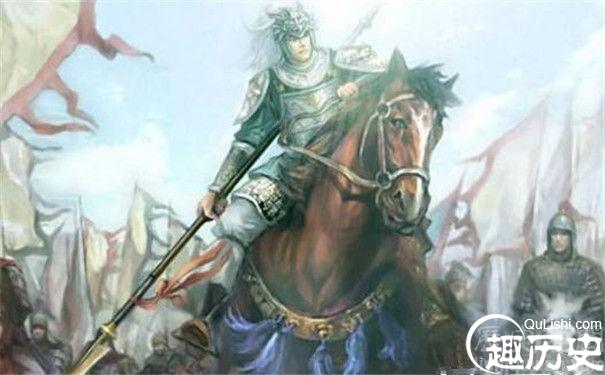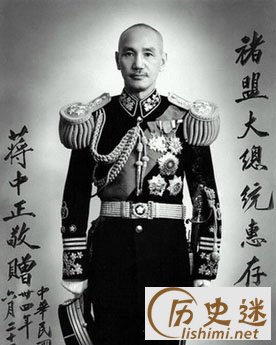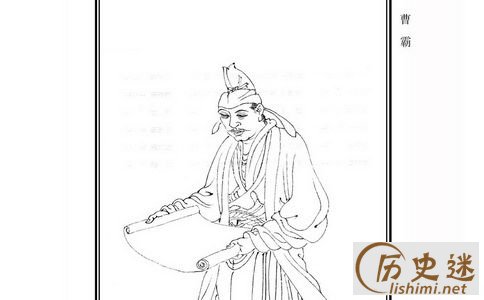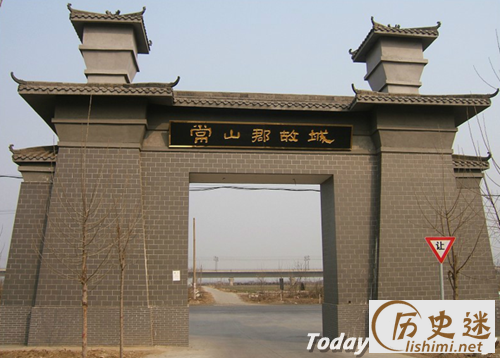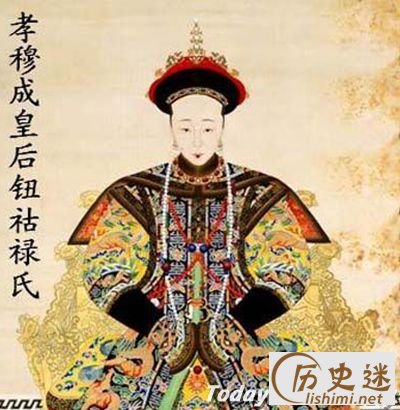新视野大学英语1读写教程单词(江西科技学院2020年专升本复习大纲汇总)
《英语》
一、考试对象
本大纲适用于报考江西科技学院专升本的考生
二、考试方式和时间
闭卷笔试,考试时间为120分钟,试卷满分为100分。
三、考试题型
语法词汇、阅读理解、完形填空、翻译题、作文题
四、参考教材
新视野大学英语读写教程4(第三版)郑树棠 主编
外语教学与研究出版社
五、复习大纲
Unit 1: Life andlogic
І. Teaching Contents (内容)
Section A
1. Text A Love and logic: The story of a fallacy
2. Writing Activity—write a narrative essay
Section B
1. Reading Activity
Reading Skill—Skimming
2. Text B Why do smart people do dumb things
3. Unit Project—Writing a survey report on logical fallacies
01.Some advice on how to write narrative essay.
02. The use of important words and phrases: fallacy, pact, shrewd, dye, makeup, elite, radiant, counterpart, pearl, banner, make a pact; in exchange for, set a date for, appeal to, make an analogy between.
II.Content focuses (重点)
03. Apply the writing skills to organize a paragraph
III. Difficult points (难点)
1. Talk about logic and narrative essay.
2. Practice the reading skill-Previewing.
Unit 2: Secrets to beauty
І. Teaching Contents (内容)
Section A
1. Text A The confusing pursuitof beauty
2. Writing Activity—write a comparison/contrastessay
Section B
1. Reading Activity
Reading Skill—Identifying the topic sentence
2. Text B Making the choice to be truly beautiful
3. Unit Project—Discovering your own beauty
II.Content focuses (重点)
1.Some useful fast reading skills.
2.The usage of important words and phrases:rehearsal, bald, arrogant, transient, affix, groom, strand, excuse oneself, come up with, stick to , etc.
III. Difficult points (难点)
1.The usage of some new words and phrases: excuse oneself, come up with, stick to sth, reach out to, be obsessed with, voice anopinion on, etc
2.Reading skills: Identifying the topicsentence
3.Writing skill: Write a comparison/contrast essay
Unit 3: Being entrepreneurial
І. Teaching Contents (内容)
Section A
1. Text A Fred Smith and FedEx:The vision that changed the world
2. Writing Activity—write a narrative with biographicalinformation
Section B
1. Reading Activity
Reading Skill—Recognizing signal words of time
2. Text B Building the dream of Starbucks
3.Unit Project—Writing a report on starting one's own business
II.Content focuses (重点)
1. Information of Fred Smith and FedEx.
2. The usage of important words and phrases: reshuffle,exquisite, stockholder, clan,invalid, terrain,revive, alumnus,charter, disrupt, prototype and etc.
3. Writing skill:Recognizing signal words of time.
III. Difficult points (难点)
1. The usage of important words and phrases: reshuffle,exquisite, stockholder, clan,invalid, terrain,revive, alumnus,charter, disrupt, prototype, touchdown, hold … in high regard, pick on , beonto something and etc.
2. Grasp the reading skill—Writea narrative with biographical information.
3. Grasp the writing skill—Recognizingsignal words of time.
Unit 4: Nature: To worship or to conquer
І. Teaching Contents (内容)
Section A
1. Text A Achieving sustainable environmentalism
2. Writing Activity—Write an argumentativeessay
Section B
1. Reading Activity
Reading Skill—Reading between the lines
2. Text B What nature is telling you
3. Unit Project—Writing a report on college students' awareness ofenvironmental protection
II.Content focuses (重点)
1.Students should be able to understand sustainable development and environmental protection.
2. The usage of important wordsand phrases: democracy, congressman, segregates, consolidate, differentiate,definitive, sane, ecological, ozone, deplete, correlation, thermal,differentiate between, take on, go against the grain and etc.
3. Writing skill: Writean argumentative essay.
III Difficult points (难点)
1. The usage of some new words and phrases: ozone, deplete, correlation, thermal, differentiate between,take on, go against the grain, be incompatible with, come through and etc.
2. Talking about information of environmentalism.
3. Reading skill: Reading between the lines
Unit 5: Why culture counts
І. Teaching Contents (内容)
Section A
1. Text A Speaking Chinese in America
2. Writing Activity—Write a narrative with direct dialog
Section B
1. Reading Activity
Reading Skill—finding out word meanings
2. Text B Culture makes the business world go round
3. Unit Project—Designing a book on Chinese culture
II.Content focuses (重点)
1. The usage of important words and phrases: peninsula,confidential, recipient, nominal, emigrant, taboo, scallop, garlic, flank, cucumber,lunar, mutter, tray, foil, breach, colony, starve to death, be attached to, onthe side, etc
2. Reading skill: Finding out word meanings
III Difficult points (难点)
1. The information about your home culture.
2. The usage of taboo, scallop, garlic, flank, cucumber, lunar, mutter,tray, foil, breach, colony.
3. Writing skill: Write a narrative with direct dialog.
Unit 6: Gender equality
І.Teaching Contents (内容)
Section A
1. Text A The weight men carry
2. Writing Activity—Support an argument with personal experiences and observations.
Section B
1. Reading Activity
Reading Skill—Reading for supporting details.
2. Text B What does feminismreally mean?
3. Unit Project—Conducting a survey on the gender-major relationships in universities.
II.Content focuses (重点)
1. The usage of important new words and expressions:grid, commonwealth, rooster, crow, shepherd, weld, cabinet, lubricate, tract, shutter,liver, copper, off grid, scrape by, extract from, etc.
2. Writing skill:Support an argument with personal experiences and observations.
3. Knowing men and women are alike in many essentialways, yet there are also various gender-based differences between them.
III Difficult points (难点)
1. Understanding sexes differences biologically and psychologically.
2. Practicing the writing skill: Support an argument with personal experiences and observations.
Unit 7: Energy and food crises
І..Teaching Contents (内容)
Section A
1. Text A The coming energy crisis
2. Writing Activity—Write a cause-and-effect essay
Section B
1. Reading Activity
Reading Skill—Identifying the author's purpose
2. Text B A worldwide food crisis?
3. Unit Project—Raising peer students' consciousness of conserving energy and food
II.Content focuses (重点)
1. The usage of important words and phrases: density, triple, monopoly, fossil, treaty, poll, insurgent,extinct, indefinite, wisp, factor in, be projected to, on a scale.
2. Reading skill: Identifying the author's purpose
III. Difficult points (难点)
1. The phenomena of energy and food crisis.
2. The usage of factor in,be projected to, on a scale, fill up, clear up.
3. Writing skill: Write a cause-and-effect essay
Unit 8: Passionguides life choices
І. Teaching Contents (内容)
Section A
1. Text A A meaningful life
2. Writing Activity—Write a personal narrative
Section B
1. Reading Activity
Reading Skill—Understanding figurative language
2. Text B A turning point of my life
3. Unit Project—Talking about a person who has made a difference in the world
II.Content focuses (重点)
1.Students can understand the turning point of their own lives.
2.The usage of important words and phrases: angel, obituary, seminar, specimen, assassin,secular, oath, graphic, brochure, leaflet, turn up, put out, alert to do, etc.
III. Difficult points (难点)
1.The usage of some new words and phrases: oath, graphic, brochure, leaflet, turnup, put out, alert to do, etc.
2. The significance of someone who changed the world
3. Critical thinking about figurative language
《高等数学》
一、考试对象
本大纲适用于报考江西科技学院专升本的考生
二、考试方式和时间
闭卷笔试,考试时间为120分钟,试卷满分为100分。
三、考试题型
选择题、填空题、计算题、综合题
四、参考教材
《应用数学》.高焱 主编.机械工业出版社.2018.
五、复习大纲
(一)第一部分 函数、极限与继续
1、函数的概念:函数的定义、函数的定义域、函数的表示法、分段函数。
2、函数的简单性质:单调性、奇偶性、有界性、周期性。
3、函数的四则运算与复合运算。
4、函数极限的概念,左、右极限及其与极限的关系、趋于无穷时函数的极限、趋于有限值时函数的极限。
5、函数极限的定理:唯一性定理、四则运算法则。
6、无穷小量和无穷大量,无穷小量与无穷大量的定义、无穷小量与无穷大量的关系、无穷小量与无穷大量的性质、两个无穷小量阶的比较、几种常见的等价无穷小的运用。
7、两个重要极限。
8、函数连续的概念,函数在一点处连续的定义、左连续和右连续、函数在一点处连续的充分必要条件、函数的间断点及其分类。
9、函数在一点处连续的性质,连续函数的四则运算、复合函数的连续性。
10、闭区间上连续函数的性质,有界性定理、最大值和最小值定理、介值定理(包括零点定理)。
(二)第二部分 导数与微分
1、导数概念,导数的定义、左导数与右导数、导数的几何意义、可导与连续的关系。
2、求导法则与导数的基本公式。导数的四则运算、反函数的导数、导数的基本公式。
3、求导方法,复合函数的求导法、隐函数的求导法、对数求导法、由参数方程确定的函数的求导法、求分段函数的导数。
4、高阶导数的概念:高阶导数的定义、高阶导数的计算。
5、微分:微分的定义、微分与导数的关系、微分法则、一阶微分形式不变性。
(三)第三部分 微分中值定理与导数的应用
1、中值定理:罗尔(Rolle)中值定理、拉格朗日(Lagrange)中值定理。
2、洛必达(L' Hospital)法则。
3、函数单调性的判定法。
4、函数极值与极值点、最大值与最小值。
5、曲线的凹凸性、拐点。
(四)第四部分 不定积分
1、不定积分的概念:原函数与不定积分的定义、原函数存在定理、不定积分的性质。
2、基本积分公式。
3、换元积分法:第一换元法(凑微分法)、第二换元法。
4、分部积分法。
(五)第五部分 定积分
1、定积分的概念:定积分的定义及其几何意义。
2、定积分的性质。
3、定积分的计算。变上限的定积分、牛顿一莱布尼茨公式、换元积分法、分部积分法。
4、定积分在几何学上的简单应用。
《计算机应用基础》
一、考试对象
本大纲适用于报考江西科技学院专升本的考生。
二、考试方式和时间
闭卷笔试,考试时间为120分钟,试卷满分为100分。
三、考试题型
选择题、填空题、应用题
四、参考教材
刘红冰 主编,计算机应用基础教程(Windows 7+Office 2010) (第3版),中国铁道出版社,2015年9月
五、复习大纲
(一)第一部分 计算机基础知识
1、了解计算机的发展史与分类,理解计算机的主要特点,了解计算机的应用领域和发展趋势;
2、理解计算机系统的基本组成和计算机的工作原理,理解计算机系统的性能指标与常用术语;
3、了解计算机数制的基本概念,掌握二进制、八进制、十进制、十六进制数及各种数制间的转换,了解计算机中数的表示方法,理解字符编码;
4、理解微型计算机硬件系统的组成,了解中央处理器、内存储器、外存储器、外围设备的概念和主要功能;
5、理解计算机软件系统的概念以及软件系统的分类,了解常用的系统软件和应用软件;
6、理解多媒体技术基本概念和基本应用,了解多媒体计算机系统;
7、理解计算机信息安全的基本概念,了解计算机信息系统安全的影响因素、计算机信息安全的威胁来源和计算机信息安全的保障机制,掌握计算机病毒的基本概念和计算机病毒的防治方法;
(二)第二部分 操作系统
1、理解操作系统的概念、功能和分类,了解常用的操作系统;
2、了解Windows 7的基本概念,掌握Windows 7的启动和退出;
3、掌握Windows 7的"桌面"、"窗口"、"菜单"、"对话框"的操作,掌握快捷方式的作用和建立方法,了解Windows 7的帮助和支持功能;
4、掌握Windows 7个性化设置(外观和主题设置、自定义任务栏、设置日期和时间、用户账户管理、管理桌面小工具);
5、掌握Windows 7资源管理器的使用,包括文件及文件夹的查找、创建、选择、重命名、移动、复制、删除、设置属性等;
6、掌握Windows 7附件中常用的程序(记事本、写字板、画图、计算器、截图工具)的使用;
(三)第三部分 Word 2010文字处理软件
1、了解 Word 2010的基本功能,掌握Word 2010的启动和退出,掌握word文档的新建、打开、保存等基本操作,掌握文本的输入、选定、插入与删除、复制与移动、查找与替换、撤销与恢复等基本编辑技术;
2、掌握字体格式设置、段落格式设置、项目符号和编号设置、边框和底纹设置、分页符和分节符设置、分栏设置、首字下沉设置、中文版式设置、拼音指南和带圈字符设置基本排版技术;
3、掌握图片和图形的插入、图形的建立和编辑、艺术字和文本框的使用和编辑、页面背景设置、主题设置等图文混排技术,掌握表格的创建和修改、表格的修饰、表格中数据的输入与编辑、数据的排序和计算等表格制作技术;
4、了解word 2010视图方式,掌握插入页眉、页脚和页码操作,掌握设置纸张大小、页边距、字符数/行数等页面设置操作,掌握打印预览和打印操作。
5、掌握大纲视图、导航窗格、文档样式、拆分窗口、插入目录、脚注和尾注、题注和交叉引用、邮件合并等应用;
(四)第四部分 Excel2010电子表格处理软件
1、掌握Excel 2010的基本概念、基本功能、启动和退出;
2、掌握工作簿、工作表、单元格的基本概念和基本操作,包括工作簿和工作表的建立、保存和退出,数据输入和编辑,工作表和单元格的选定、插入、删除、复制、移动,工作表的重命名和工作表窗口的拆分和冻结;
3、掌握工作表的格式化操作,包括设置数据显示格式、设置对齐方式、设置文字格式、设置边框和填充格式、保护工作表、设置条件格式、设置表格样式;
4、掌握公式和函数的使用,包括单元格绝对引用,相对引用,工作表中公式的输入和复制,常用函数的使用,公式出错信息;
5、掌握数据统计与分析的使用,包括数据清单的概念,数据清单的建立,数据清单内容的排序、筛选、分类汇总;
6、掌握使用图表分析数据,包括图表的建立、编辑和修改以及修饰,数据透视表的建立、修改和查看;
7、掌握工作表的页面设置、打印预览和打印;
(五)第五部分 PowerPoint 2010演示文稿制作软件
1、了解PowerPoint 2010基本概念;掌握PowerPoint 2010的启动和退出;掌握PowerPoint 2010的窗口及视图方式;
2、掌握PowerPoint 2010的基本操作,包括演示文稿的创建、打开和保存,编辑幻灯片,使用幻灯片版式;
3、掌握演示文稿的格式化及可视化操作,包括设置幻灯片中的文字格式,项目符合和编号的使用,幻灯片的主题设置、背景设置、母版制作和使用;
4、掌握幻灯片中动画效果的设置、超链接和动作按钮的设置、幻灯片切换方式的设置、幻灯片放映设置;
5、掌握演示文稿的打印和打包;
(六)第六部分 计算机网络基础及Internet
1、了解计算机网络的发展历程,理解计算机网络的定义、功能、分类,了解计算机网络的组成与结构,掌握计算机网络的拓扑结构,了解计算机网络的体系结构和网络协议的基本概念;
2、了解局域网的定义、类型以及常用网络操作系统;
3、了解Internet的起源与发展、功能、体系结构,了解TCP/IP网络协议、IP地址、域名系统等基本概念,了解Internet接入技术;
4、掌握Internet信息检索及软件应用,包括 IE 8浏览器的使用与设置,保存网页中的信息,搜索网络信息、使用IE 8浏览器下载资源;
(七)第七部分 电子邮件与Outlook 2010
1、了解电子邮件E-mail的概念及应用;
2、了解Outlook 2010 的功能区域、配置邮件账户、管理联系人、创建邮件、接收并查看邮件、答复以及转发或全部答复邮件、删除邮件等操作。


